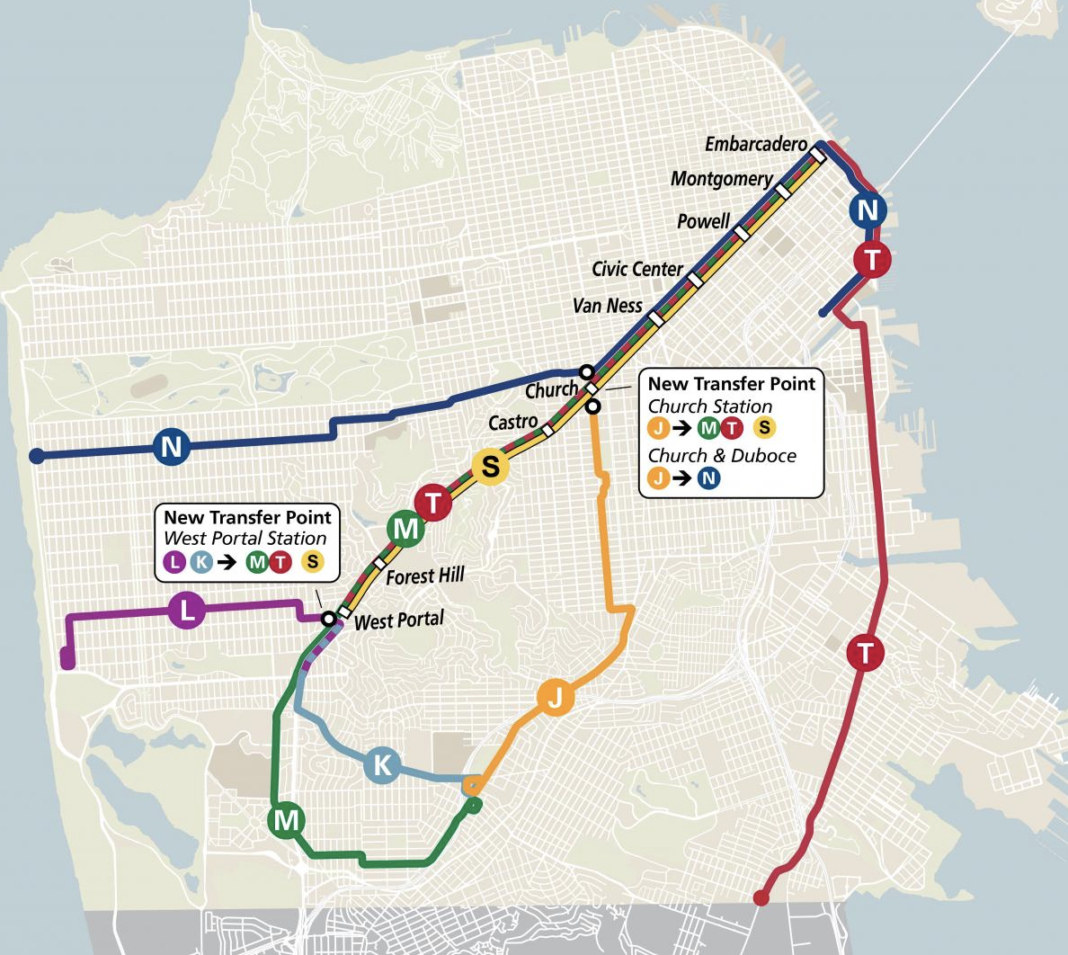SAN FRANCISCO—The San Francisco Municipal Transportation Agency (SMFTA) announced on Thursday, June 18, the August reopening of the Muni Metro rail system and some accompanying changes to the railway.
The Muni Metro subway has been closed since March due to the state-ordered public health guidelines issued in response to COVID-19.
Muni has said that the subway plans to be up and running again in August, excluding certain rail lines in order to reduce delays and backups in the subway tunnels. To replace the routes that do not get reopened, Muni intends to install a shuttle system.
The lines that will be returning are the N Judah, M Oceanview, T Third, L Taraval, K Ingleside, and J Church.
Muni has implemented a new Metro cleaning program that will support the sanitary maintenance of buses and trains while they are circulating their routes throughout the day. Prior to COVID-19, the vehicles were only cleaned at buses and rail yards.
As the subway begins to open though, Muni has emphasized that routes will not be the same as they were pre-pandemic.
The J, K, and L will not operate in the underground subway area so riders must transfer after the lines end on the above-ground rail. Passengers should also expect a transfer while traveling downtown.
These modifications intend to mitigate subway backups. Muni described the pre-lockdown subway riding experience in a statement: “Like a backed-up freeway, trains get stuck in traffic, causing unacceptable slowdowns and unreliable service across the system.”
These changes will thus be enacted in order to keep trains running smoothly and offer the necessary service efficiency to mitigate overcrowding and maintain social distancing. Amid these new routing switches, Muni encourages customers to adapt their commuting habits, especially during the growing pains of these transitions.
Prior to the COVID-19 shutdown, Muni was overloading its systems, as the SMFTA explained in a statement. It had been running around 40 trains per hour when its system’s capacity was at most around 35 trains per hour, which ultimately caused backups and delays. As it returns, the subway has pledged to run around 25 to 30 trains per hour to keep things efficient. This plan intends to shorten running times and allow for more frequent service.
Regarding these operational adjustments, Muni said in a statement, “Change has been needed for a long time, but now, more than ever, we must get people to their jobs and activities reliably and reduce delays that could increase risk of exposure to COVID-19.”







